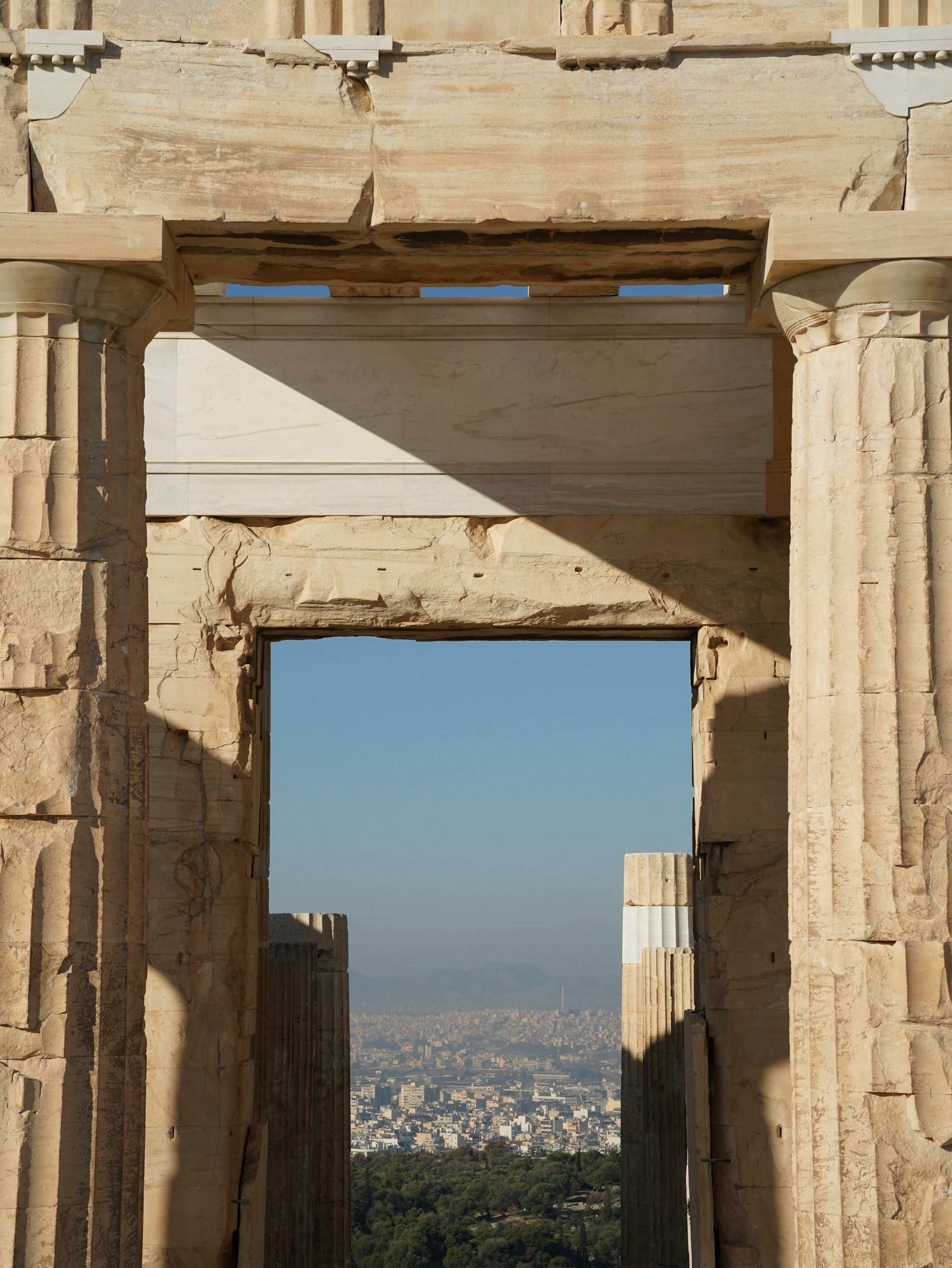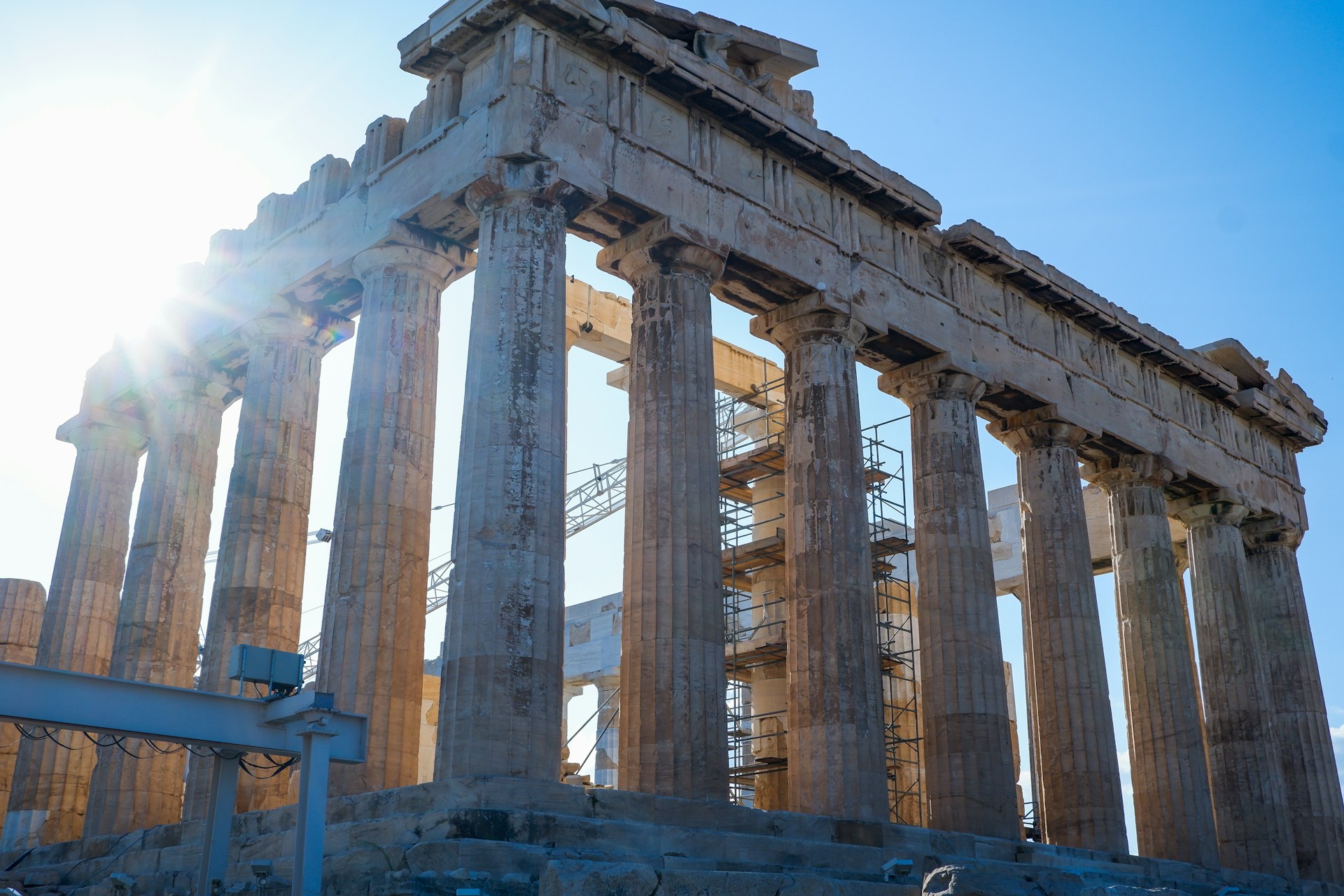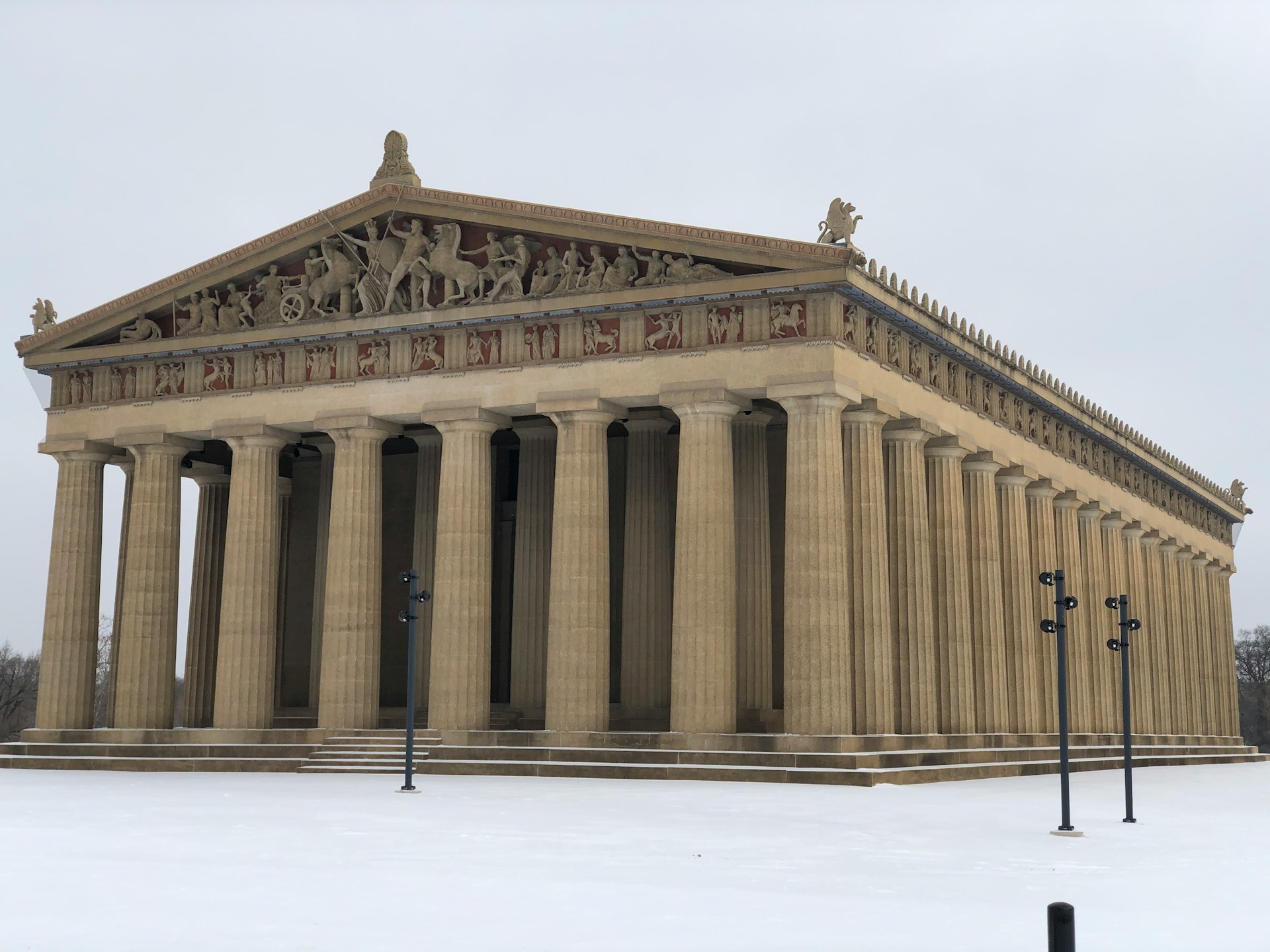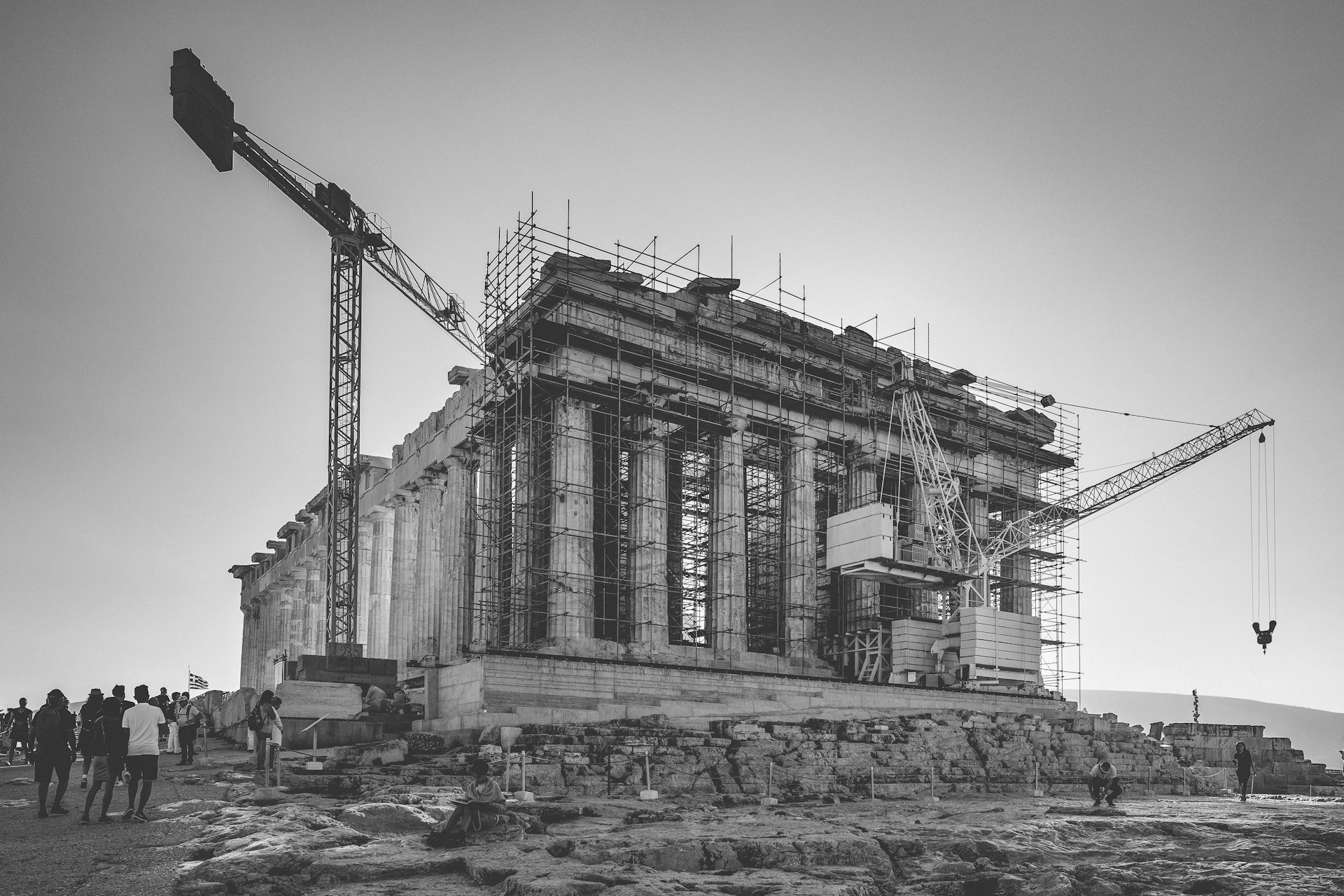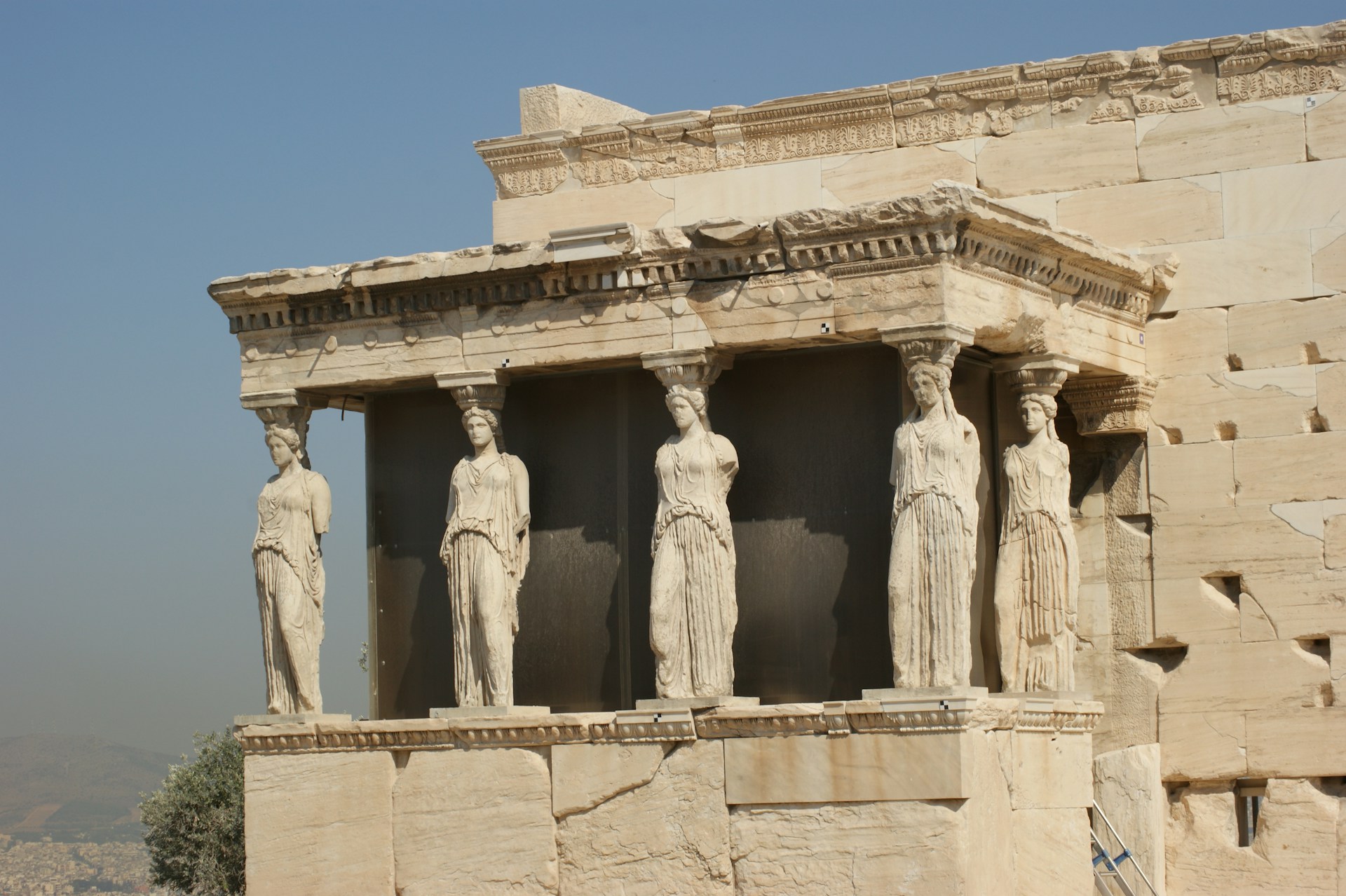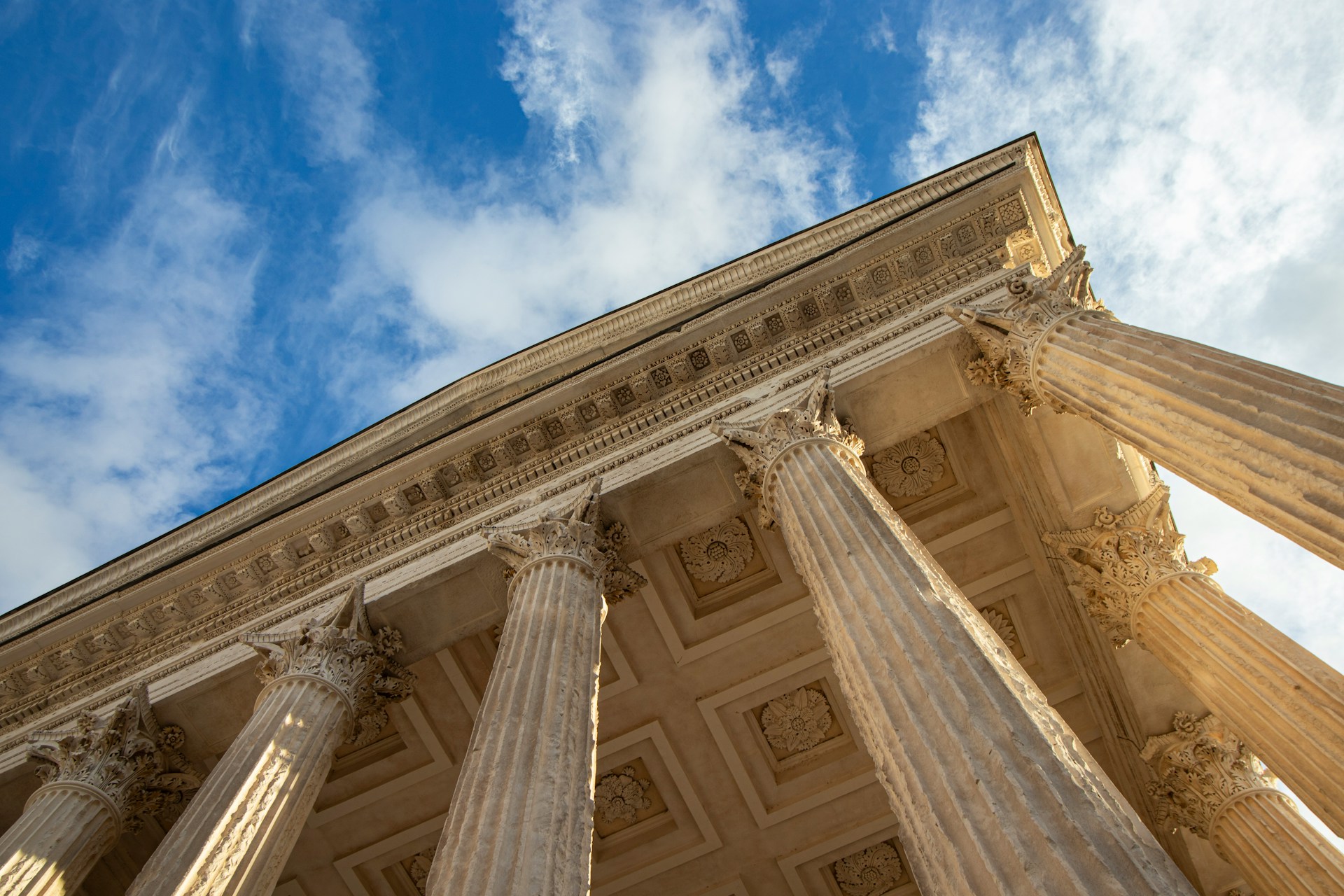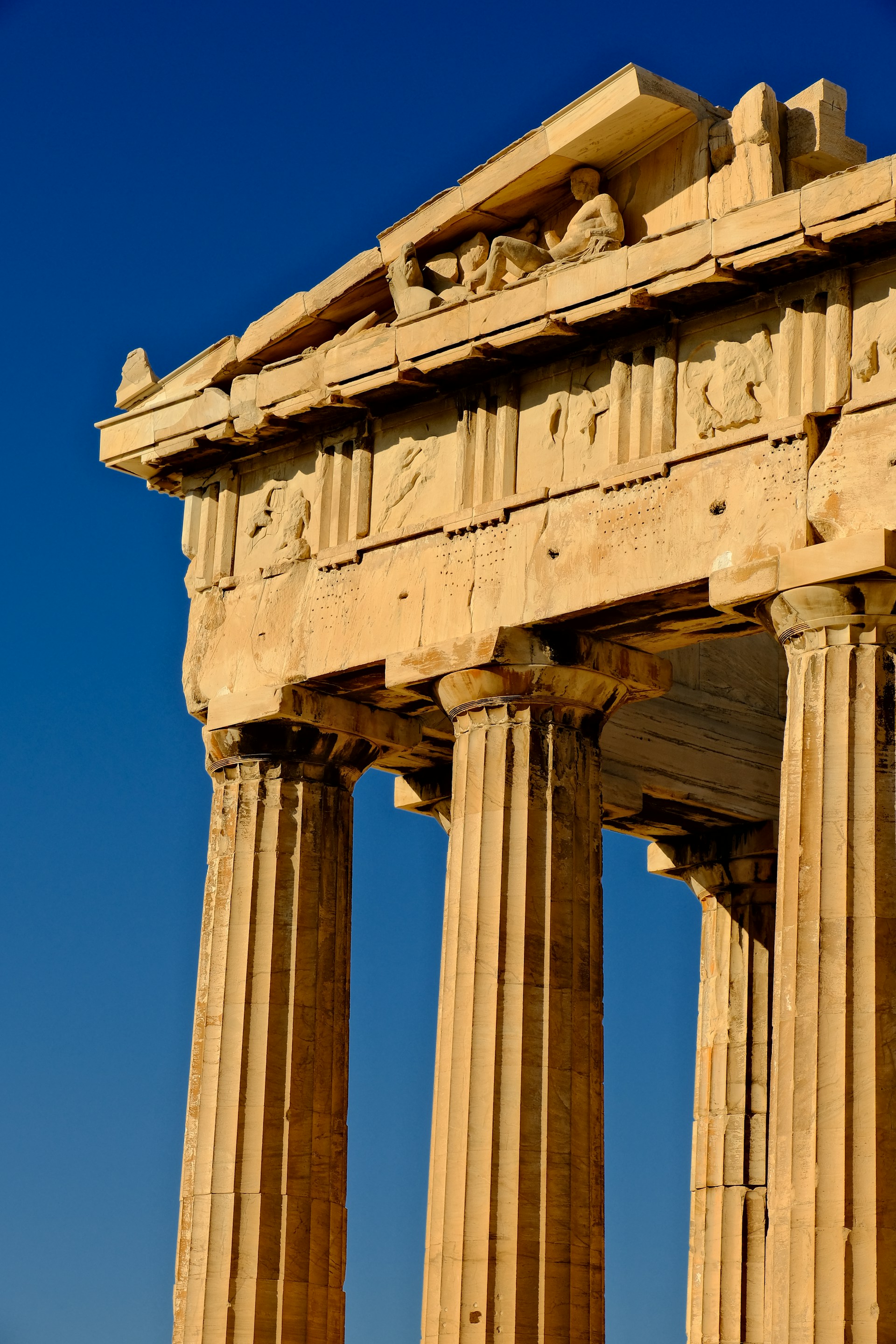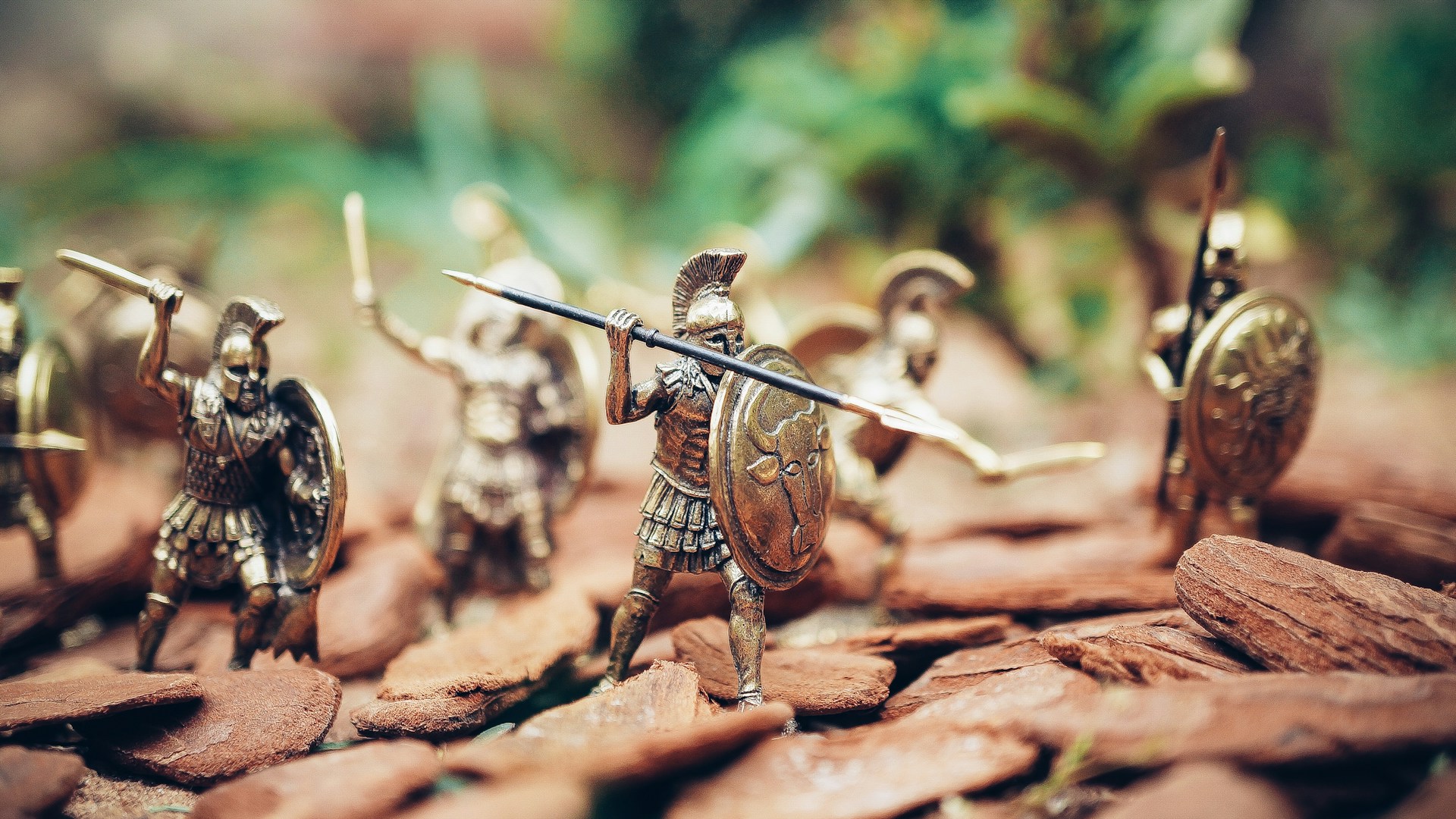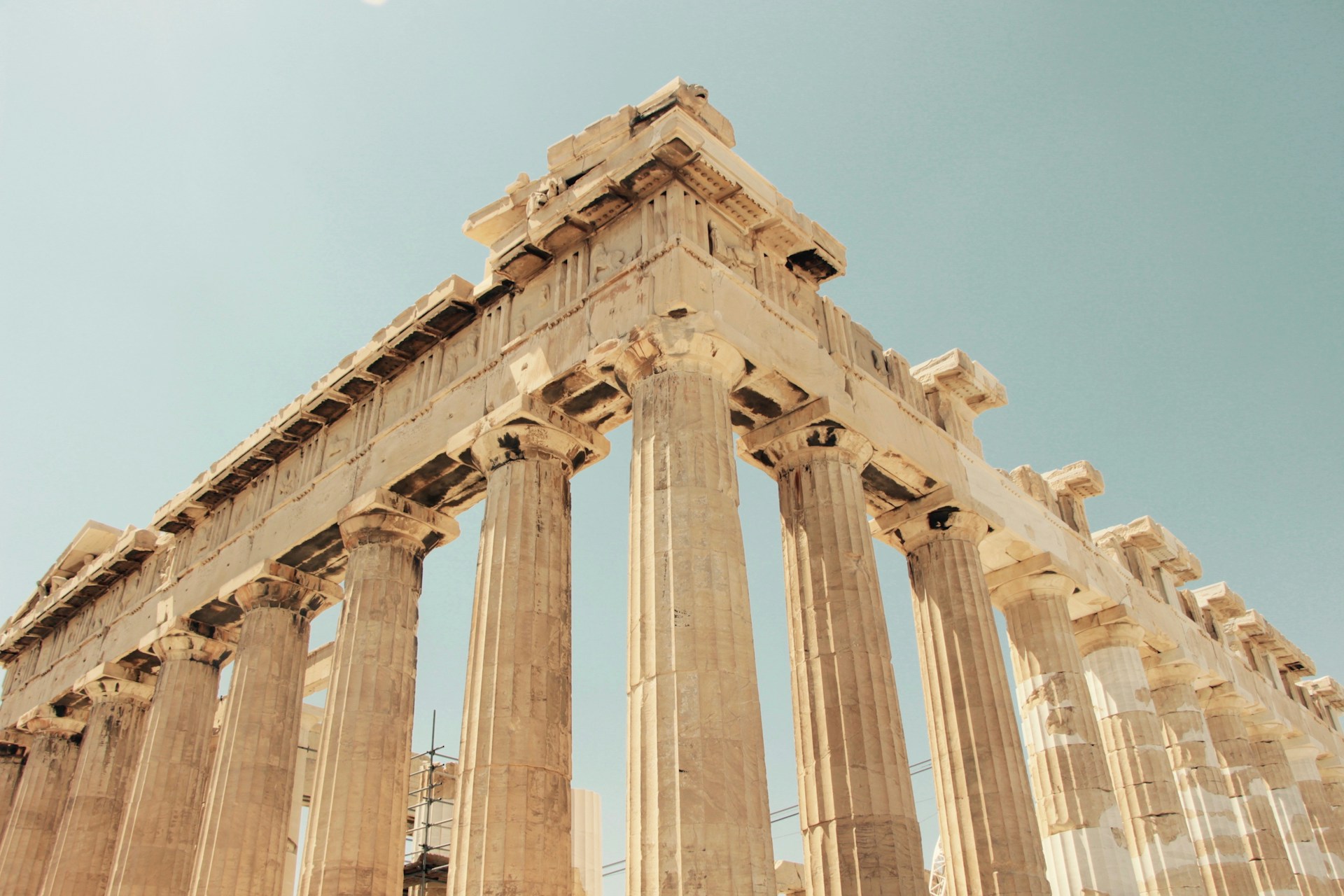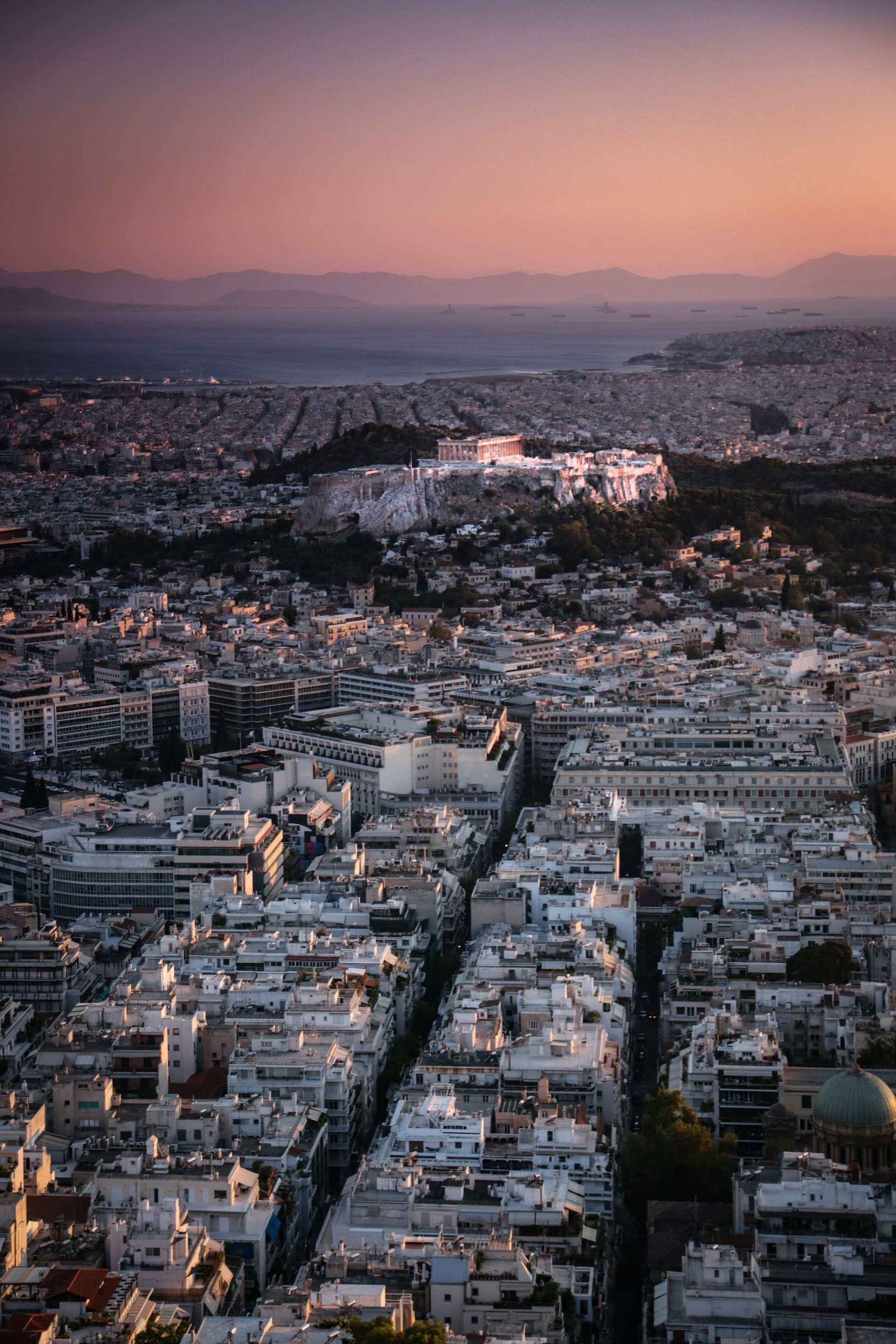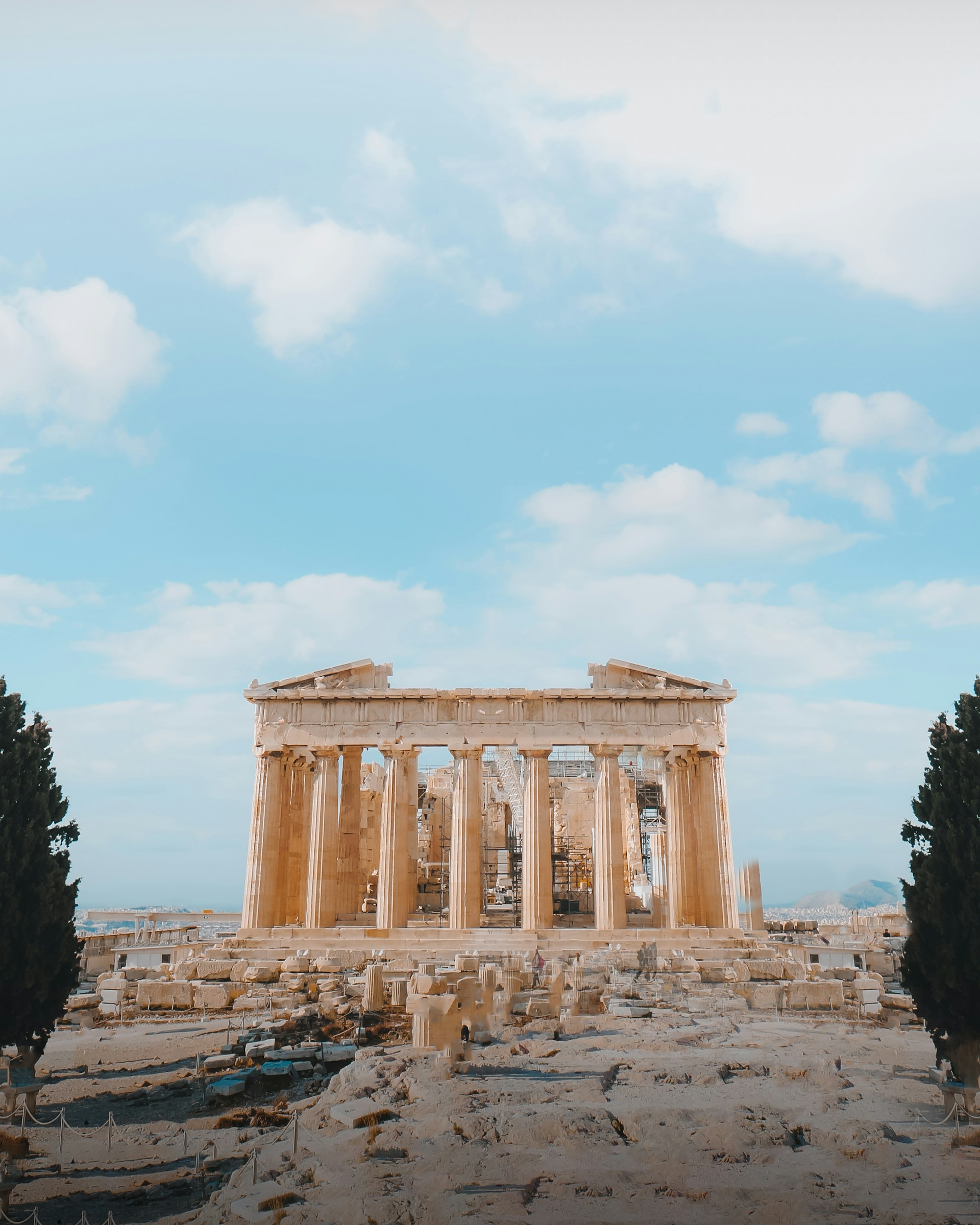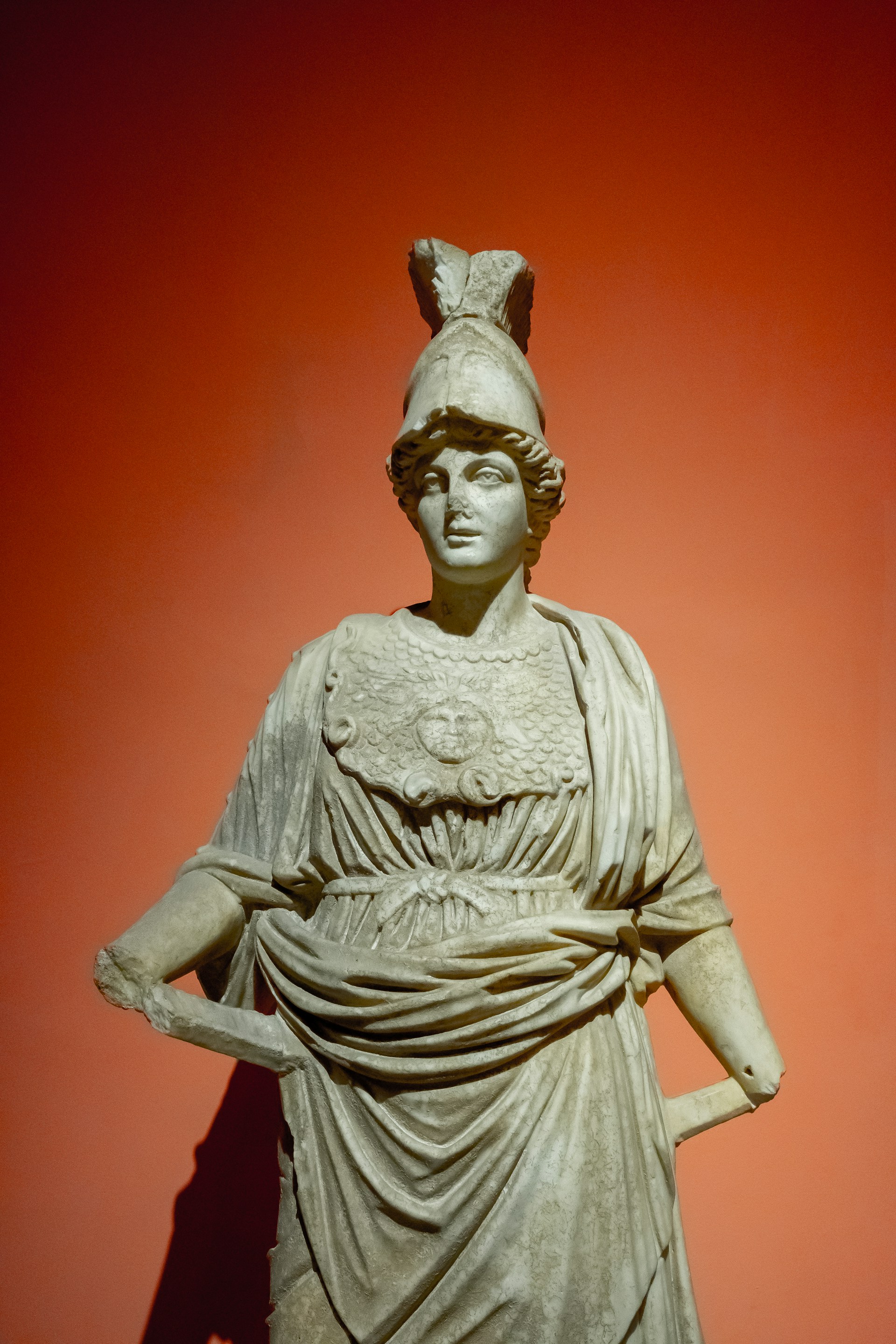Greek Architecture With Complex History
Ancient Greek architecture is deeply rooted in culture and history which has awe-struck historians and researchers alike. Greek design has influenced architects for centuries and the Parthenon is the quintessential piece of all its glory. Withstanding thousands of years of life in Athens, the Parthenon is full of incredible facts.
1. Perfect Golden Rectangle
The proportions of the Parthenon have been studied for centuries, leading us to understand why it was built at such a particular size. Researchers believe the outer dimensions form a “perfect golden rectangle”, supporting the theory that the Parthenon was constructed to exact measurements per the sacred geometric “golden” or “phi” ratio.
2. Iconic Doric Architecture
Most architects and historians will agree that the Parthenon is the prime example of ancient Greek architecture, remarkably balancing elegance and power. It is an iconic temple structure and a symbol of Greece that is thought to be the greatest of the Doric order, the simplest design of the three classical Greek styles.
3. Dedicated To A Goddess
The Parthenon was a monumental temple dedicated to the goddess Athena. “Parthenon” translates to the status of the goddess, proclaiming she was an unmarried virgin. It also refers to the myth of her existence by parthenogenesis, creation by the head of Zeus.
4. Copycats
The Parthenon is one of the most copied pieces of architecture throughout history. Its classic Doric style has been a model for many architects across the globe including the Lincoln Memorial in Washington and the British Museum in London. An identical-scale replica in Nashville was erected during the Tennessee Centennial Exposition in 1897.
5. Religious Changeovers
The Parthenon was originally built to honor the beloved pagan goddess Athena, protector of Athens. However, through changes in Athen’s rulers over time, the temple has gone through multiple role transitions representing various religions. From Christianity to Islam, the Parthenon’s religious conversions are what attracts so many to study its complex history.
 Priscilla Du Preez 🇨🇦 on Unsplash
Priscilla Du Preez 🇨🇦 on Unsplash
6. The Parthenon Sr.
It’s not widely known that there was once a Pre-Parthenon, also known as the Older Parthenon. The first temple of Athena that once stood in its place dates back to 2800 AD. It was built by the Neolithic society, a civilization that existed well before the Minoans and Mycenaens.
7. Mythical Location
The reason the Parthenon stands tall on its hill wasn’t a random decision. The exact location was consciously plotted to align with a cluster of stars known as the Hyades, a belief in Greek mythology. The legend claims that the Hyades are the daughters of a Titan named Atlas. Atlas was punished by Zeus to hold the heavens on his shoulders for eternity.
8. Wooden Roof
When we think of Greek architecture, lavish materials like gold and marble come to mind. Although most of the Parthenon is made of solid white marble, the original roof was thought to be made of wood. The builders were smart–– if the roof was also made of marble it might’ve been too heavy, collapsing the grand columns under its pressure.
9. Story Building
Like many ancient buildings and monuments, the Parthenon was designed to tell a story. All sides of the structure have been hand-carved with scenes from Greek culture and legends. Some carvings tell the story of the battle of the Olympus gods against the giants and others show depictions of mythological creatures called centaurs. The birth of Athena is also displayed on its marble walls.
10. Multi-Purpose Venue
The Parthenon is often referred to as a temple but it has served many purposes throughout history. The structure has been used as an art gallery and a treasury, housing the brilliant statue of Athena which was created out of melted gold. The original statue was taken by the tyrannical leader Lachares who used the gold to fund his pricey army.
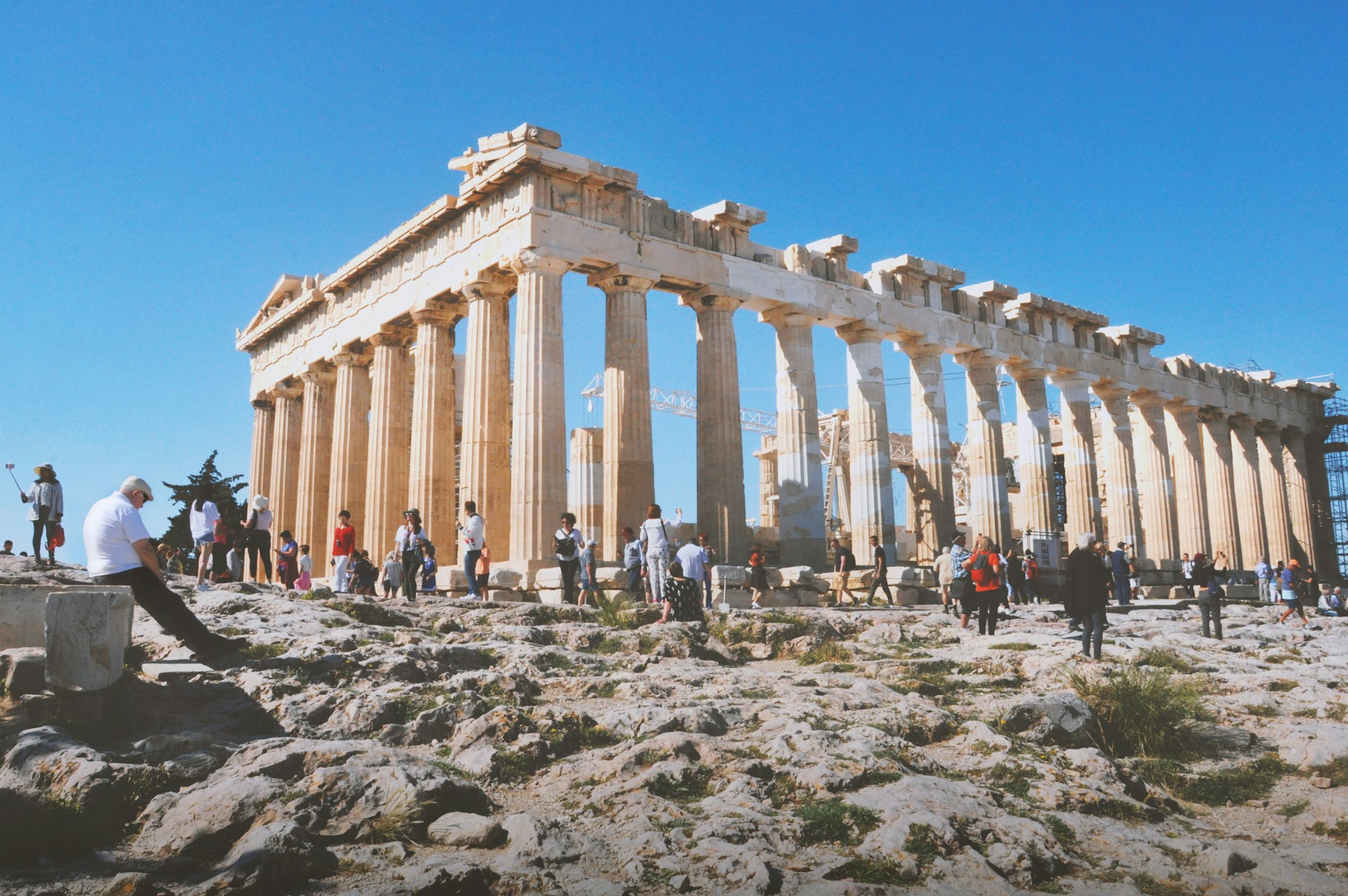 Francesca Noemi Marconi on Unsplash
Francesca Noemi Marconi on Unsplash
11. A Colorful Parthenon
We usually think that Greek architecture is white but historians believe that the Parthenon was colorful when it was first constructed. The colors have likely faded away due to pollution and weathering over time. The Colosseum of Rome is also thought to have been colorful in its heyday.
 Nicholas Martinelli on Unsplash
Nicholas Martinelli on Unsplash
12. Battle Scars
The Parthenon has survived many attacks over 2000+ years, showing several battle scars to prove it. It was heavily damaged in 1687 when the Venetians fired at the building with gunpowder, igniting it in flames. The roof was destroyed along with many columns and sculptures.
13. Earthquake Resistant
The ancient Greeks may not have considered gunpowder but they thought about natural disasters. Since Greece was often shaken by Earth tremors, the Parthenon was designed to withstand earthquakes. Its parabolic upward curvature allows the structure to release rainwater while reinforcing it against powerful movement.
14. Once A Mosque
In the 1460s, Greece was under Ottoman rule and Athena’s temple was converted into a mosque. For the next 200 years, the Parthenon was a mosque with a minaret that was formed from a previous Catholic church tower.
15. Building Time
It wasn’t a quick process. The first attempt to build the Parthenon took place in 490 BCE but before it was finished, the partial structure was destroyed during the Persian invasion. Reconstruction of the temple that stands today started in 438 BCE and was completed in 432 BCE.
16. Pericles Projects
The Parthenon was one of several other temples in the Acropolis compound that were part of a series of projects started by Pericles. He began a rebuilding program to replace valuable temples that were destroyed in the region. It wasn’t cheap–– the project cost around 470 silver talents which equals 7 million USD today.
17. Stolen Sculptures
In the early 19th century, the Turks had Greece under their control and decided to steal sculptures from the Parthenon. They forcibly removed the Elgin Marble sculptures that once adorned the temple and sold them to Englishman, Lord Elgin. They were later sold to the British Museum and despite Greece asking for them back, they remain there today.
18. Optical Corrections
The Parthenon shows off the impression of perfection and stark beauty. The human eye believes in its glory thanks to the clever precision of composition elements. Optical corrections are shown in the design in parts such as the base of the arcs, the curve direction of the columns, and the corner columns placed closer together than the others.
19. The Parthenon Metopes
We already know this temple is special but to make it even more distinguished, the Parthenon is the only temple that has representations on all metopes. The reason behind the lack of representation of the other temples is due to economics and the need to cut costs. Only the Parthenon was deemed worth it.
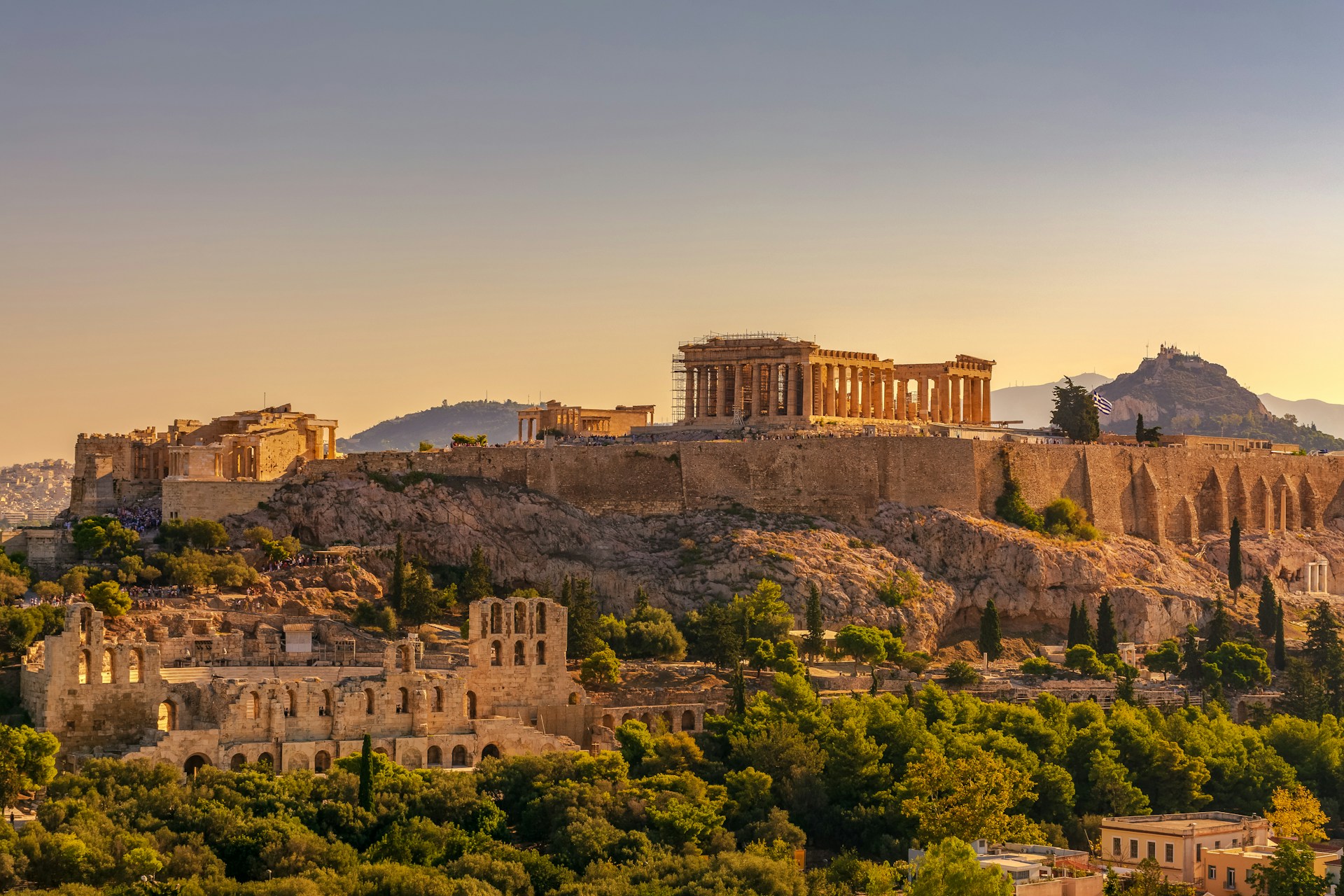 Constantinos Kollias on Unsplash
Constantinos Kollias on Unsplash
20. The Great Parthenaea
The biggest celebration of Athena is depicted in the composition of the Parthenon Frieze. Known as the Great Panathenaea, the celebration was held every 4 years on Athena’s birthday, the 28th of the month of Hekatombaion. The final event carried the new veil of the goddess which depicted embroidery of the godly battles.
KEEP ON READING

How They Caught The Smartest Criminal In History
Ghazi777755 on WikimediaFor decades, one man sat at the head…
By Farva Ivkovic Nov 24, 2025
Einstein's Violin Just Sold At An Auction—And It Earned More…
A Visionary's Violin. Wanda von Debschitz-Kunowski on WikimediaWhen you hear…
By Ashley Bast Nov 3, 2025
This Infamous Ancient Greek Burned Down An Ancient Wonder Just…
History remembers kings and conquerors, but sometimes, it also remembers…
By David Davidovic Nov 12, 2025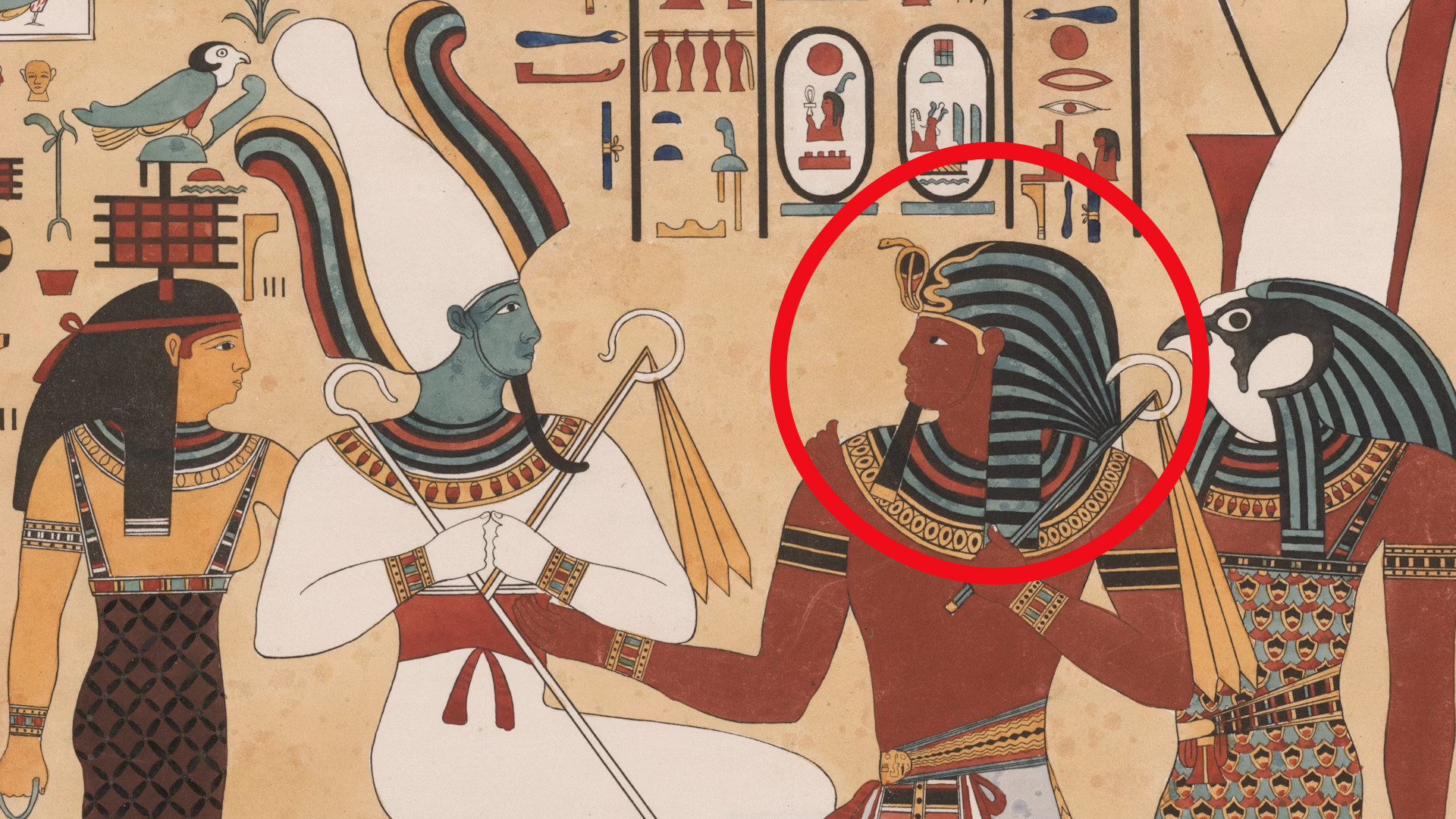
The Mysterious "Sea People" Who Collapsed Civilization
3,200 years ago, Bronze Age civilization in the Mediterranean suddenly…
By Robbie Woods Mar 18, 2025
20 Inventors Who Despised Their Creations
Made It… Then Hated It. Inventors often dream big, but…
By Chase Wexler Aug 8, 2025
20 Incredible Items In The British Museum People Say Were…
Mystery In History. The mighty halls of the British Museum…
By Chase Wexler Sep 8, 2025


